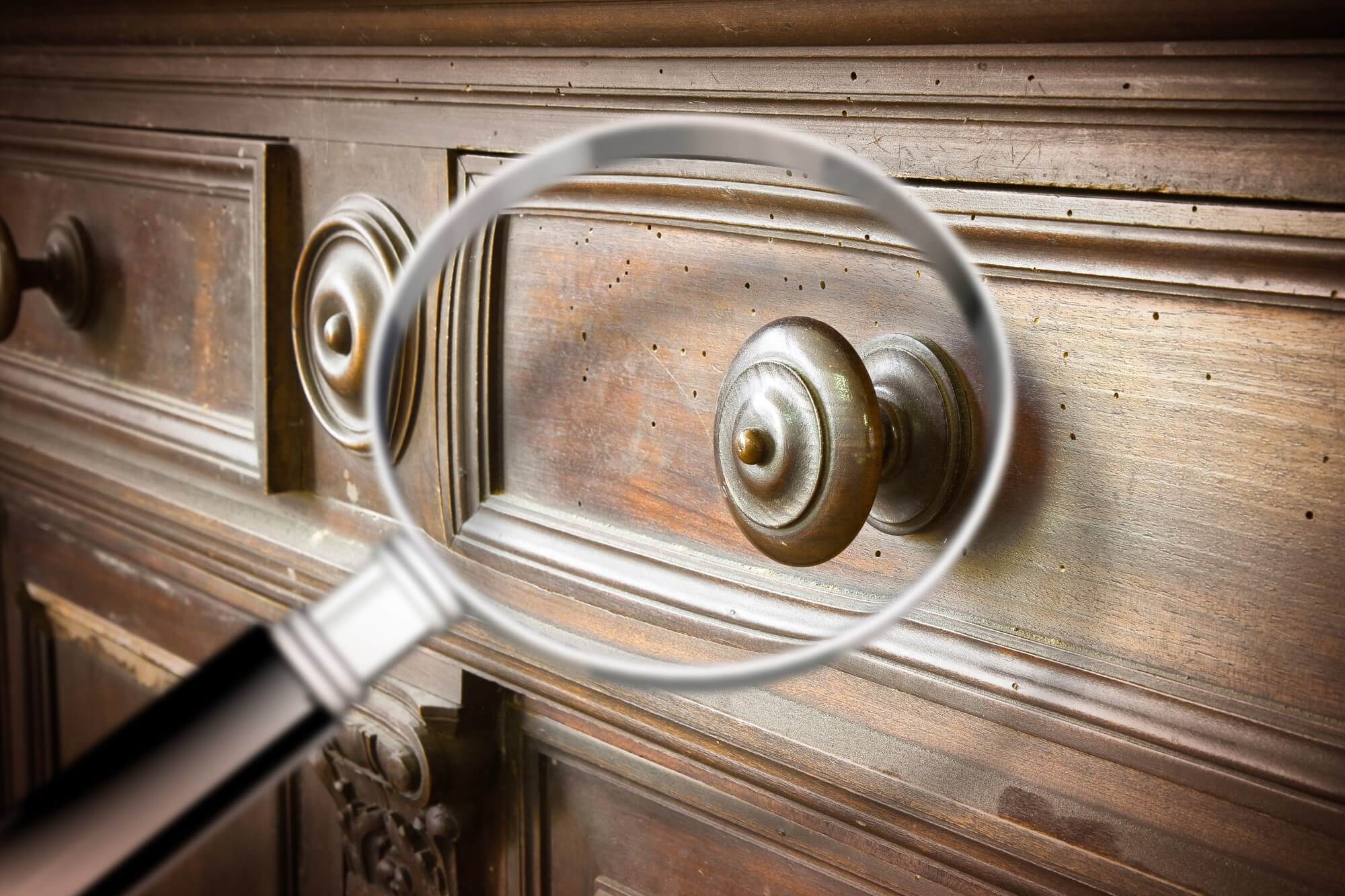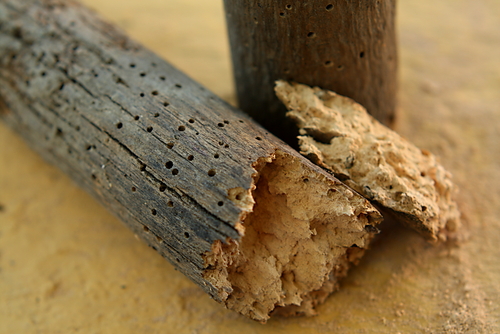
What Does Woodworm Look Like?
As a homeowner, you might come across woodworm. But do you know what woodworm looks like, how you can identify it and how to deal with the damage it can cause? Let’s take a look!
What is woodworm?
Woodworm isn’t worms. Its larvae from wood-boring beetles. The larvae feed on wood as they grow and are most commonly found in older wooden items like furniture, floorboards, and wooden beams.
Where to look for woodworm in your house
You can find woodworm in damp and mould areas where the wood is softer and easier for the larvae to bore into. Common areas include attic spaces, particularly roof timbers, wooden floorboards and skirting boards, old furniture and underneath wooden decking or in garden rooms or sheds.
How to look out for woodworm
You can see when woodworm is present when there are tiny holes in the wood and a cloud of powdery dust. Holes are usually about 1-2mm in diameter. Below we’ve added a picture to help you identify what woodworm looks like:

What happens when you leave woodworm untreated?
Over time, woodworm damage will weaken wood, potentially causing structural damage if left untreated.
It’s most common in older properties that may have suffered from damp. If you have an older property and think you might be prone to woodworm, it’s worth to regularly look out for the signs and to check your wooden surroundings.
Severity and potential impact
The impact woodworm can have will largely depend on how severe an invasion you have is. Also the type of wood that is affected can make a difference.
In extreme cases, woodworm can weaken structural timbers, which can be dangerous. To look out for woodworm it’s advised to have regular inspections, particularly of vulnerable areas. It can help catch infestations early and it can reduce the risk of potential damage.
Tips on how to get rid of woodworm
Small, isolated plagues can often be treated with DIY woodworm treatment products.
If you’re seeking a non-toxic solution to woodworm, treating it with vinegar can offer a safe and effective treatment. Vinegar is said not to harm the larvae. Instead of killing them, it encourages the larvae to vacate the wooden object it inhabits. It just might smell for a while!
Professional treatment
In some cases, you might need to think about completely replacing the affected area.
Our preferred architects can help by designing and overseeing the restoration or replacement process, ensuring it blends seamlessly with your home’s existing structure, while also making sure any new materials are resistant to future infestations.
Does house insurance cover woodworm?
Standard house insurance policies typically do not cover woodworm infestations, as they often consider them a house maintenance issue. However, it’s always best to check your policy details. Some insurance providers might offer coverage under certain conditions or as an additional option.
Tips to avoid it
Regularly inspect your home and look for signs of woodworm, especially if you have areas prone to dampness and an older property.
Treat minor infestations promptly with over-the-counter products but seek professional advice for any larger issues. If in doubt of what woodworm looks like, always consult a professional for the most effective treatment and advice.
Why not sign up for our monthly newsletter to get expert tips and advice delivered straight to your inbox? Whether you’re in the process of buying, renting, or renovating, our newsletter has something valuable for everyone.
Last Updated: December 16th, 2024







